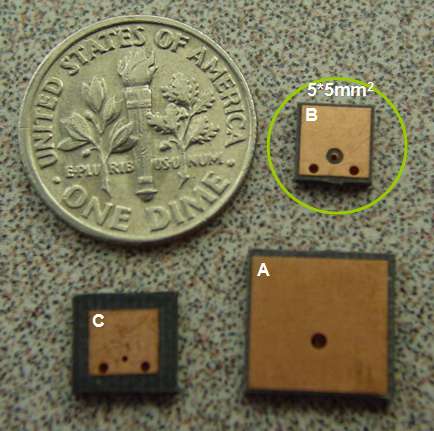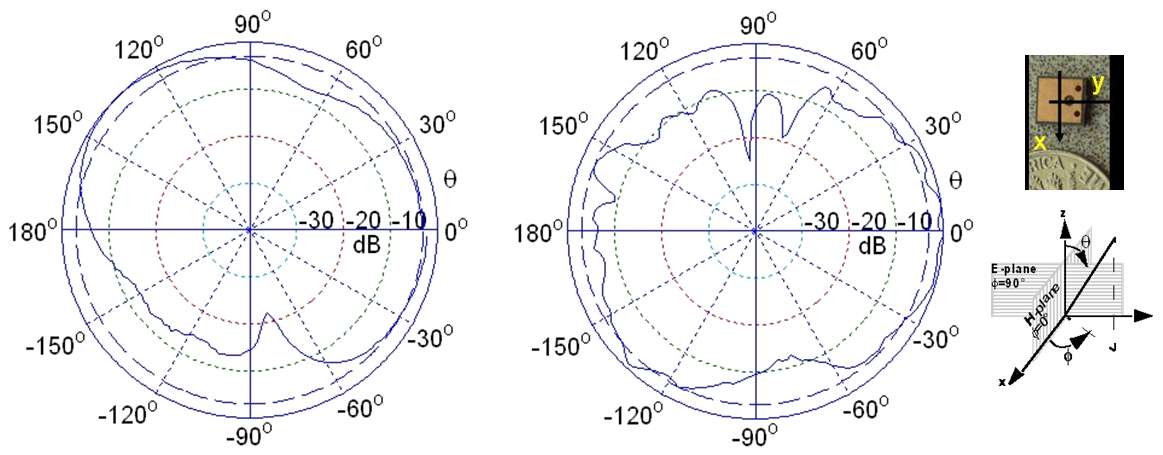Postdoc (2004)

"Efficient On-Chip
Antennas at GHz Frequencies"
MEMS Lab of Carnegie Mellon University (CMU), Pittsburgh, PA, USA
Advisor: Gary Fedder
Project goals
Global objectives:
The project aimed to develop the technology to enable the fabrication of a complete wireless sensor chip by connecting directly on the CMOS die a tiny PCB antenna. To understand the limits of on-chip antennas, we explored methods to improve antenna efficiency at chip sizes with two main tasks: 1) assess and choose antenna geometry and materials, 2) assess and ameliorate the effect from the substrate.
The transmission frequency has been arbitrary choosen at 10 Ghz, but a similar concept can be exploited for near field communication in the hundreds MHz range for wireless implantable sensors.
Results
A 4x5x1.6
mm3 microstrip antenna was fabricated on a RT/Duroid 5880 Printed Circuit Board
(PCB) with a maximum gain of 0.75 dBi at 10.3 GHz. The S11 return loss matches
simulation well, though the cut out of PCB directly affects the ground plane
size. This leads to relatively large manufacturing tolerance and is easy to fix
by design. Compared to
simulation results, a 45° shift of direction of maximum radiation has been
observed. A maximum transmission distance of
Normalized pattern in the E and H planes of the B-type antenna at 10.2 GHz


At an
operating frequency of 10 GHz the antenna area is minimized, but power radiated at this frequency is highly attenuated
within couple of millimiters inside the body tissues. IEEE
standards require a maximum exposure of 10 mW/cm2, which limits the maximum
radiated power to an implantable antenna on chip. This
work is useful for sensor applications outside the body,
and reduction of frequency associated to an antenna made of
bio-comtible material, while maintaining chip-size form factor, is
needed.
Related publications
Conferences
 "Chip-size" antennas
for implantable sensors and smart
dust", P.
Basset, F. Alfaro, D. Novosel, A. de la Plaza, D. Stancil and G. K.
Fedder, Proceeding of the 13th int. Conf. on Solid-State
Sensors,
Actuators and Microsystems (Transducers’05),
Seoul, Korea, pp.
457-460, 2005
"Chip-size" antennas
for implantable sensors and smart
dust", P.
Basset, F. Alfaro, D. Novosel, A. de la Plaza, D. Stancil and G. K.
Fedder, Proceeding of the 13th int. Conf. on Solid-State
Sensors,
Actuators and Microsystems (Transducers’05),
Seoul, Korea, pp.
457-460, 2005
